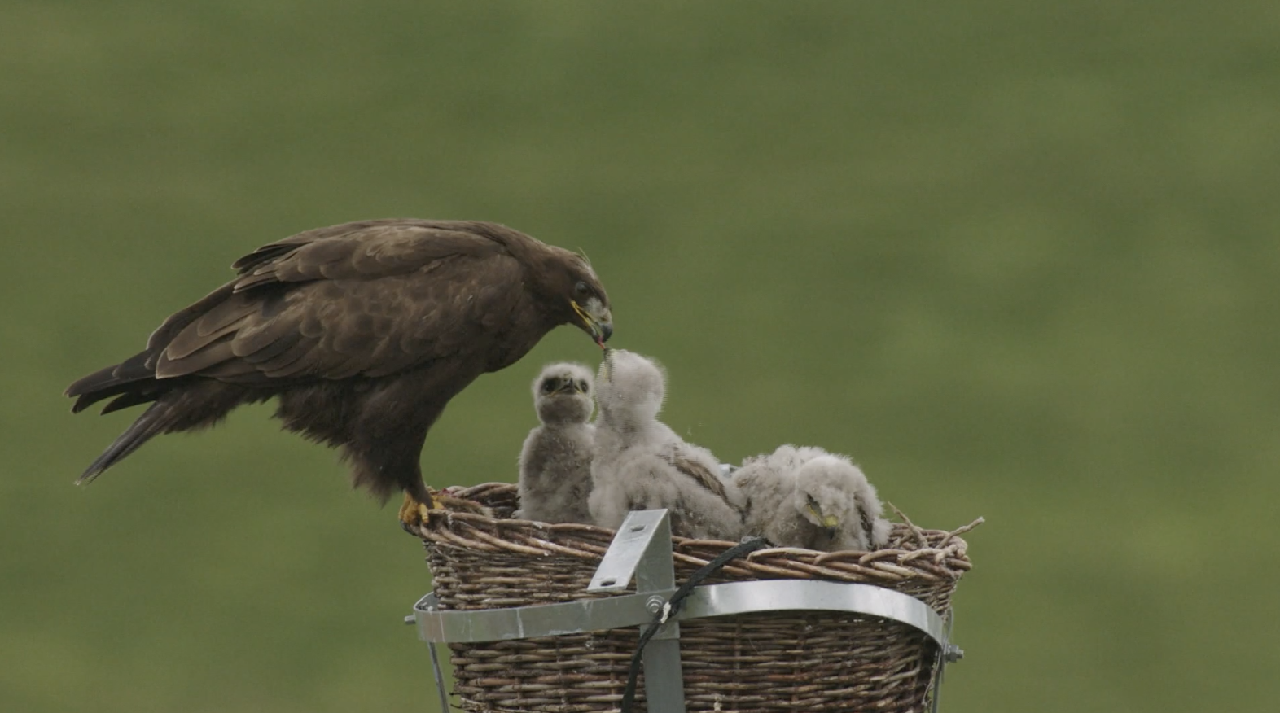Artificial Nests Shield Birds and Power Grids in Northwest China's Sanjiangyuan
The Sanjiangyuan nature reserve in northwest China has established artificial nests for raptorial birds, including the upland buzzard, to promote a harmonious co-existence between wild birds and power transmission facilities.

The upland buzzard, a principal predator of grassland ecosystems, primarily preys on small herbivores like pikas, voles, and marmots. It serves as a key indicator of the health of grassland ecosystems.
Situated on the high-altitude Qinghai-Xizang Plateau in southern Qinghai Province, the Sanjiangyuan region is known as China's "water tower" due to its role as the origin of prominent rivers including the Yangtze, Yellow, and Lancang.
Established in 2000, the nature reserve in this area aims to safeguard its vast natural resources and the wildlife that inhabit it. The ecosystem here, characterized by its lofty elevation ranging from 3,500 to 4,800 meters, comprises one of the most untouched and sensitive environments globally. It hosts an array of rivers, diverse fauna, and lush vegetation.
The reserve is a habitat for around 300 rare bird species, with over 20 different types of raptors, including golden eagles, saker falcons, and upland buzzards.
Over the years, the expansion of power networks has brought transmission towers and electrical grids into the once secluded Sanjiangyuan area. These towering structures provide an appealing perch and nesting areas for large birds that rely on extensive views to hunt.
These predatory birds often utilize these towers for resting, nesting, hunting, and raising their offspring. The debris and droppings from the birds can cause circuit outages, thereby disrupting the stability of the electrical grid.
Local power suppliers have reported that bird-related disturbances make up to 30 percent of all circuit interruptions.
Initial efforts to deter birds from the towers involved the use of repellents which were briefly effective. "Repellers were effective in the first two or three months, but the birds adapted to the repellers a few months later. Due to the strong ultraviolet rays in this area, repellers become fragile over time, making it easy for upland buzzards to knock them down when landing," explained Xu Wenqi, a former staff member of the State Grid Yushu Power Supply Company.
After unsuccessful attempts to relocate upland buzzards' nests, the company decided to provide specially designed artificial nests.
They consulted with local herders and wildlife experts, subsequently crafting nests tailored to the birds' needs.
"The first generation of nests we made had a roof, as we were thinking that the birds could shelter from wind and rain, but no birds moved in after we set up them. Later, we learned about their habits and realized that adult upland buzzards have waterproof feathers, and when it rains, they would lie on the nest and protect the young birds with their wings, so there was no concern about water seeping in. Also, it is convenient for adult individuals to feed their chicks in open cup nests. Birds are very vigilant, and open cup nests provide a broader view. If they sense danger, they can fly away in any direction," mentioned Sonam Tsering, a vehicle dispatcher with the comprehensive service center of the State Grid Yushu Power Supply Company.
Ultimately, 200 artificial nests were installed on transmission towers throughout the Sanjiangyuan area.
"We found some individuals settled down [in the artificial nests] after about 10 days since we set up them at the first [pilot] location. We were quite excited to capture footage of the first baby bird born in the artificial nest after two or three months in around July or August, as many people have contributed in the process. It was incredibly exciting for us to see new life hatched," Xu shared.
Through continuous improvements and installations in areas with active bird populations, the State Grid Qinghai Provincial Power Supply Company has managed to reduce bird-related line tripping by nearly 30 percent.
Emily Johnson for TROIB News
Find more stories on the environment and climate change on TROIB/Planet Health












